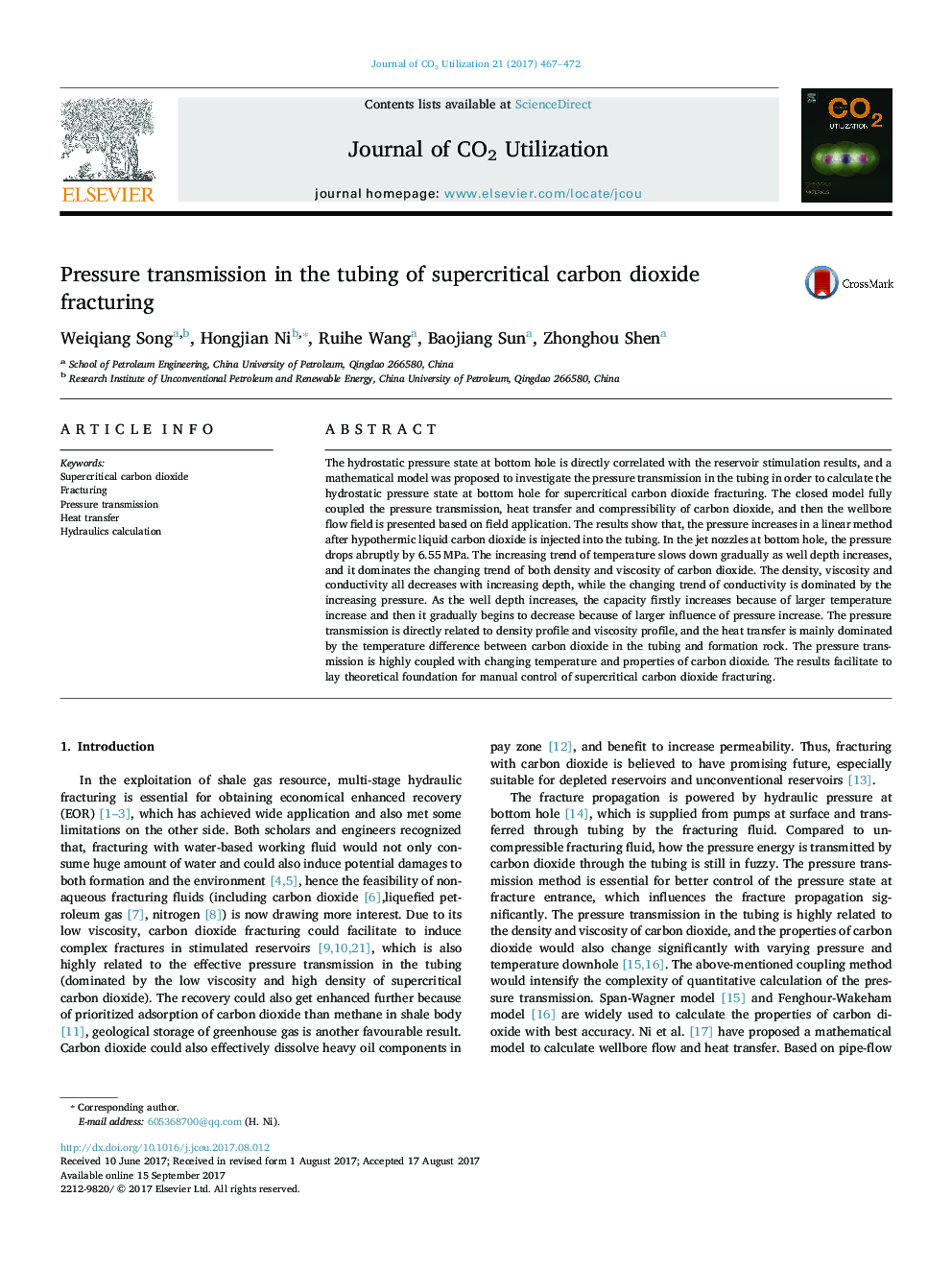| کد مقاله | کد نشریه | سال انتشار | مقاله انگلیسی | نسخه تمام متن |
|---|---|---|---|---|
| 6456132 | 1419841 | 2017 | 6 صفحه PDF | دانلود رایگان |
- A coupled mathematical model is presented to investigate the pressure transmission of CO2 fracturing.
- The pressure transmission is highly coupled with changing temperature and properties of carbon dioxide.
- The heat transfer is dominated by the temperature difference between CO2 in the tubing and formation rock.
- CO2 changes into supercritical state when the depth equals 839.2Â m, and it maintains in supercritical state after jetted into formation.
The hydrostatic pressure state at bottom hole is directly correlated with the reservoir stimulation results, and a mathematical model was proposed to investigate the pressure transmission in the tubing in order to calculate the hydrostatic pressure state at bottom hole for supercritical carbon dioxide fracturing. The closed model fully coupled the pressure transmission, heat transfer and compressibility of carbon dioxide, and then the wellbore flow field is presented based on field application. The results show that, the pressure increases in a linear method after hypothermic liquid carbon dioxide is injected into the tubing. In the jet nozzles at bottom hole, the pressure drops abruptly by 6.55Â MPa. The increasing trend of temperature slows down gradually as well depth increases, and it dominates the changing trend of both density and viscosity of carbon dioxide. The density, viscosity and conductivity all decreases with increasing depth, while the changing trend of conductivity is dominated by the increasing pressure. As the well depth increases, the capacity firstly increases because of larger temperature increase and then it gradually begins to decrease because of larger influence of pressure increase. The pressure transmission is directly related to density profile and viscosity profile, and the heat transfer is mainly dominated by the temperature difference between carbon dioxide in the tubing and formation rock. The pressure transmission is highly coupled with changing temperature and properties of carbon dioxide. The results facilitate to lay theoretical foundation for manual control of supercritical carbon dioxide fracturing.
Journal: Journal of CO2 Utilization - Volume 21, October 2017, Pages 467-472
